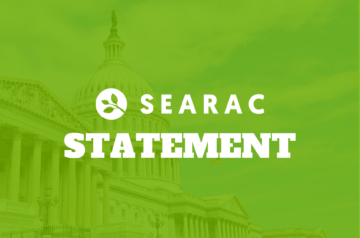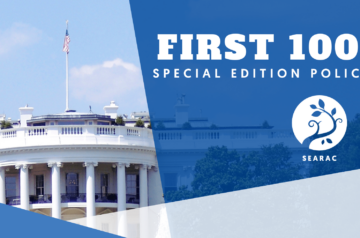Washington, DC – Today, SEARAC is proud to launch census factsheets for the Southeast Asian American (SEAA) community translated into five languages: Khmer, Lao*, Hmong, Vietnamese, and Mien. These resources, along with the English versions launched in August, are meant to bolster education and encourage participation among SEAA communities that have been historically harder to reach and harder to count, including:
- Immigrants
- Elders
- Young adults
- Youth and children
“We are thankful to our partners for translating these materials in order to make them more accessible for all community members,”said Katrina Dizon Mariategue, director of national policy at SEARAC. “Through the generous support and expertise of BPSOS-Houston, Freedom Inc, the Fresno Center, Iu-Mien Community Services, and the Cambodian Family, we are excited to share these new resources, which we hope will support our community partners in educating and mobilizing SEAAs to get-out-the-count next year. While the public is welcome to download and share the resources as is, we also encourage individuals to edit and tailor them for their own needs in their local communities.”
During the last census in 2010, more than 650,000 SEAAs, or 23% of the SEAA population, were found to live in areas of the country that had low census response rates.12 Additionally limited-English proficiency continues to be a challenge for many SEAAs to census participation. The 2011-2015 American Community Survey reveals that roughly 38.3% of Cambodian, 36.7% of Hmong, 34.5% of Lao, and 48.6% of Vietnamese households speak English less than “very well,” compared to 8.6% of total US households.3 This means that these community members may be vulnerable to an undercount, resulting in loss of money that could have gone to their communities for important programs, like fixing roads, more health care, more affordable housing options, and more money to schools.
“Our communities have grown in number since our initial resettlement into the country following the US occupation in Southeast Asia decades ago, yet we continue to remain invisible,” said Quyen Dinh, executive director at SEARAC. “The census is a critical program that facilitates the collection of national disaggregated data, which is key to advocacy for policies that promote equity among SEAAs. We hope that these resources inspire the power and potential that our community carries to fight for our own self-determination by participating in the 2020 Census.”
Consider signing up to be a SEARAC Census Ambassador to educate your community and get out the count by signing up here.
*Our previously published Lao factsheets have been updated to show the correct versions.



